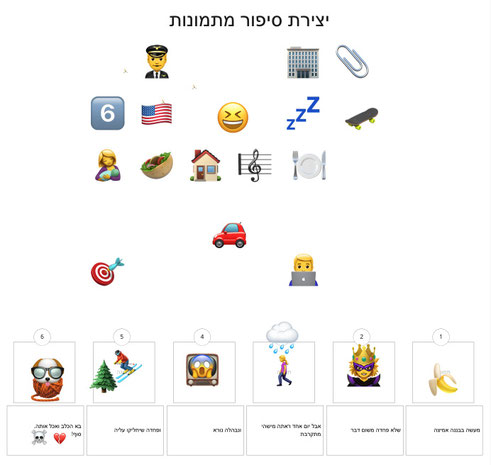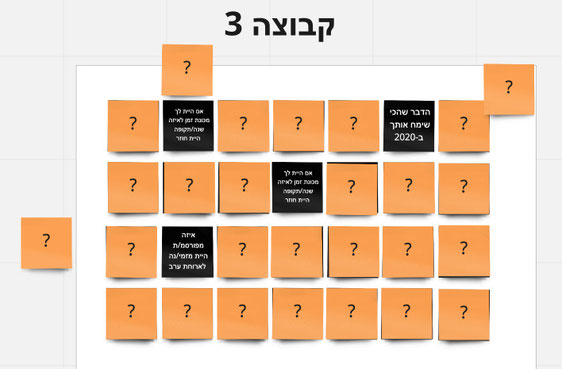Each design thinking workshop begins with a warm-up exercise. We call it "Ice Breaker". Ice breakers set the ground for a fruitful, open, creative and flowing discussion.
In our latest Design at Business Israel meetup we decided to put the spotlight on icebreakers: review, practice, and discuss their impact on the success of the workshop

Breaking the Ice
We started obviously with an ice breaker - The 30 participants were divided into 4 virtual rooms and were asked to browse through a series of images and choose the one they most relate to and use it to introduce themselves. It is worth mentioning that the technical barriers of using Zoom and Miro also served as an ice breaker, when people struggled with these tools and helped each other

We continued with a great presentation about Ice breakers by Ran Liron, who gave us a list of potential ice breakers, do’s and don’ts and some insights about the role of ice breakers in a design thinking workshop
Next we split into groups, while each group practice a different type of ice breaker:
- “Story in Pictures” Making a storyboard out of a predefined set of emojis
- “Word Salad”: making a story out of a random cloud of words
- “Where do I want to be now”
- “Question by Surprise”


Analyzing Ice breakers
The last step was about analyzing Icebreakers: we used feedback grid exercise to drill down into the Icebreakers method and analyze it according to the following criteria’s: What works, What needs to change, Open questions and Ideas

Worked ✚
People think icebreakers are effective as long as they are fun, short, well moderated, In a small group, and that everyone are equally involved
- The remote setup raised some technical difficulties which served also as icebreakers as people were helping each other out.
Change ❢
- People mentioned that In some cases icebreakers could be perceived as “childish” or as “waste of time”, this poses a risk on the entire the perception about design thinking.
- Icebreakers based on group tasks (such as story in pictures or word salad) seemed less effective, as they often creates a situation where one takes the lead while others are less active.
- Some exercises were identified as lesser fit for remote sessions.
- There are people who find icebreakers to be too personal / embracing, ands feel a pressure to be creative in front of the team
Questions ?
- How much time is required?
- How to fit exercises to the group size? To the workshop topic? To culture? To profession?
- How to leverage this forward to the actual workshop? It’s not enough to get to know each other, or do we need to understand what each can bring to the workshop?
- How to make the exercise collaborative and avoid “shining stars”?
- Can icebreakers be we used also during the workshop as a relief?
Ideas
- Adjust the icebreaker to the workshop topic / theme,
- An idea for remote session: Share the most award thing around you, Use zoom background and tell the team about it
Summery
Icebreakers are usually overlooked, they can be referred to as warm up exercise and nothing more.
During this workshop we learned that icebreakers are much more than that. When carefully selected and well-moderated they can become a true innovation starter and have a huge impact on the success of any design thinking workshop.
